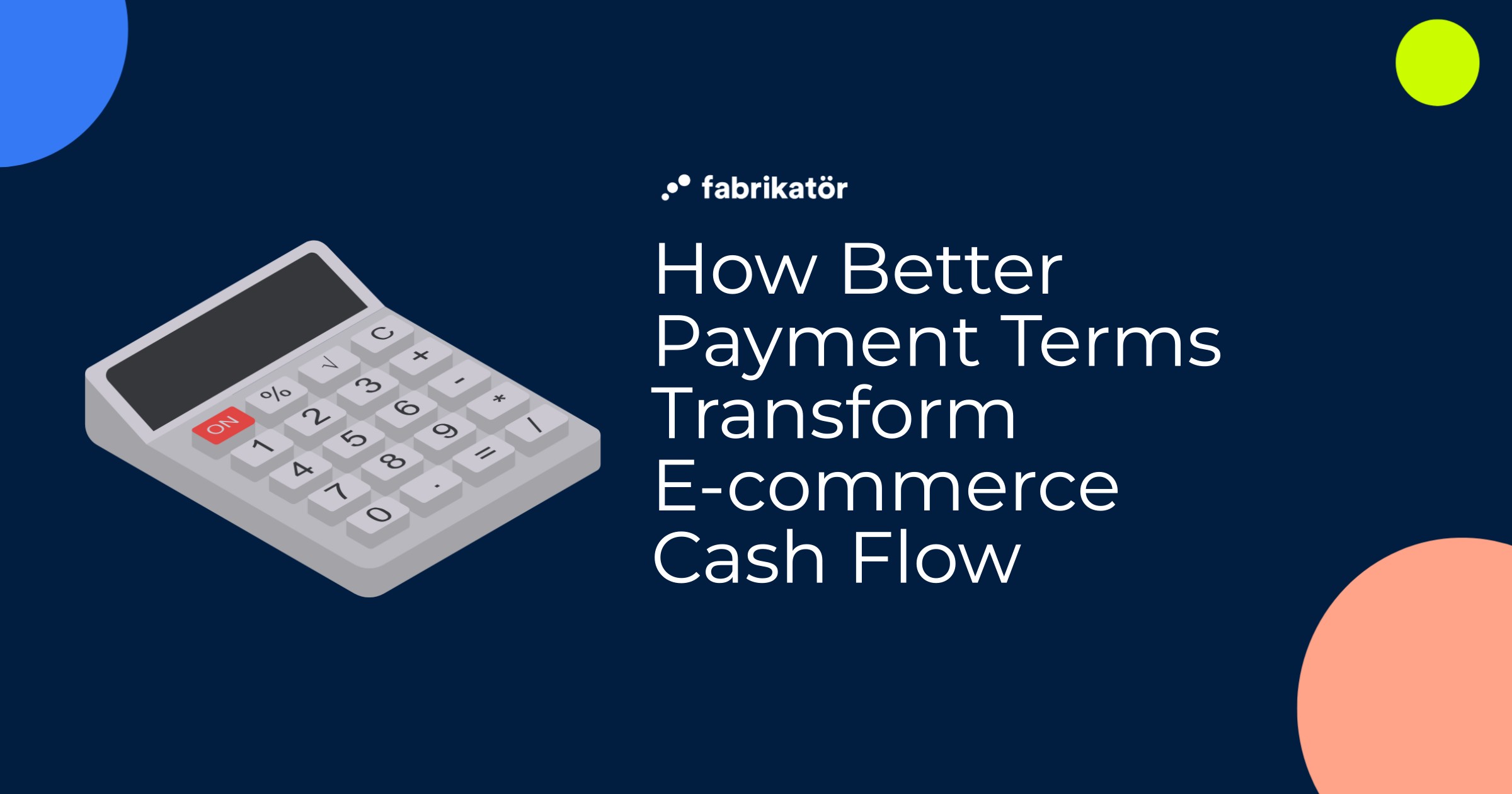Excess Inventory Management: What is It and How To Solve It

Have you been struggling with excess inventory? Overstocking to prevent out of stock, failing to forecast actual demand accurately, and relying on outdated inventory management systems… All of these can lead to surplus inventory and create more problems than they solve.
So, what can you do in this situation? You can improve your inventory management to prevent excess stock! In this blog, we’ll discuss effective strategies to tackle the excess inventory problem, including ways to manage too much inventory on hand and minimize the risks of excess inventory. Let’s get started!
What is Excess Inventory? 📦
If you have more products in your stock than the upcoming demand, meaning your actual inventory exceeds the required inventory, this is referred to as excess inventory. It means that when there is too much inventory on hand, the costs associated with holding that inventory exceed its value. Considering that carrying costs constitute 20-30% of all inventory costs for a business, managing it right is significant for eCommerce inventory efficiency.
What is the Difference Between Excess Inventory and Obsolete Inventory?
While both excess inventory and obsolete inventory can negatively impact your business, they are not the same. Excess inventory refers to having more stock than what is currently needed to meet demand, which can lead to increased holding costs and cash flow issues. This situation can be addressed through better forecasting and inventory management practices.
On the other hand, obsolete inventory refers to items that are no longer sellable or relevant to your market. This could be due to changes in consumer preferences, expiration dates, or product discontinuation. Unlike excess stock, which may still have potential sales value, obsolete inventory often needs to be written off, leading to financial losses. Understanding these distinctions is crucial for effective excess inventory management strategies.
What Causes Excess Stock?
Without identifying the root causes of surplus inventory, it’s impossible to prevent it effectively. If you have too much inventory on hand, it most likely signals an issue in the inventory management process. Main reasons causing excess inventory mostly are lack of demand forecasting, seasonality, inefficient inventory control, shipping delays, and using inefficient inventory planning solutions.
📉 Lack of Demand Forecasting
Efficient demand forecasting is essential for managing stock levels efficiently. By predicting future sales accurately, businesses can adjust their inventory to meet customer demand without overstocking. However, if forecasting methods are inaccurate or inventory data analytics are not reliable, you may end up with surplus inventory. Inadequate forecasting causes excess stock because it leads to over-purchasing.
Forecasting and making realistic plans for peak seasons like BFCM is especially challenging when demand is unpredictable. The result is too much inventory on hand, creating storage and carrying cost issues for your business.
Demand forecasting is vital in real-world scenarios, as highlighted in the Reuters. Many U.S. retailers, including Walmart, Macy’s, and Foot Locker, were burdened with excess stock in 2023 due to overestimating holiday demand. Discounts reached up to 60% in some cases as retailers tried to clear surplus inventory before Black Friday. This real-life example emphasizes the importance of accurate forecasting to avoid the financial impact of surplus inventory.
📅 Seasonality
Seasonality can also lead to excess inventory if businesses fail to adjust stock levels accordingly. Many eCommerce companies experience fluctuations in sales during specific periods, such as holidays or back-to-school seasons. If you overstock in anticipation of a surge in demand but miscalculate, you may end up with too much inventory on hand.
⚠️ Overstocking as a Precaution
Before busy shopping periods like Black Friday or the holiday season, eCommerce businesses often choose to overstock to avoid stockout. While this might seem like a smart precautionary strategy, if customer demand doesn't match expectations, it leads to excess inventory. This overstock then ties up capital and increases storage costs. Without efficient demand planning and inventory tracking, such precautionary overstocking can easily backfire. 📉
🔍 Lack of Inventory Control
As eCommerce stores grow, managing and controlling inventory becomes increasingly challenging. Without an automated solution, relying on manual tools like Excel often leads to inaccurate data, which makes inventory control less effective. This means that businesses may struggle to monitor their stock levels accurately and make decisions based on unreliable information. Consequently, growing eCommerce stores may end up with too much inventory on hand by mistake, misjudging their actual sales performance and demand. This lack of proper control can quickly lead to excess stock, which is costly and inefficient for the business.
🚚 Shipping Delays
Shipping delays can disrupt your entire supply chain and result in excess inventory buildup. When items don’t arrive on time or shipments are postponed, you’re forced to keep too much inventory on hand. This situation worsens if new stock continues to arrive before existing surplus inventory is sold. For eCommerce businesses, where fast shipping is critical, these delays can lead to excess stock accumulation, higher holding costs, and dissatisfied customers who face delivery setbacks.
📊 Inefficient Inventory Planning Solutions
Relying Excel spreadsheet for inventory planning may seem convenient, but they often contribute to excess and obsolete inventory. Excel lacks real-time inventory management and advanced analytics, making it difficult to adjust stock levels in response to changing demand. This inefficiency can result in either stockouts or surplus inventory, with some products being overstocked while others remain unavailable. Over time, this mismanagement leads to excess inventory on hand, straining your storage capacity and resources.
Now that we've covered the causes of surplus inventory, let's dive into the key drawbacks of having excess stock and how it impacts your business.
The Drawbacks of Excess Inventory
Having excess inventory can create three main problems for your eCommerce store:
1. Additional Holding Costs and Storage Expenses
Excess stock results in higher warehousing fees, insurance costs, and other storage expenses, which can quickly decrease your profits and tie up capital.
2. Less Available Cash Flow
When your cash is tied up in surplus inventory, it limits your ability to invest in new opportunities and often leads to excess and obsolete inventory, resulting in financial loss and waste.
3. Inefficient Inventory Management
Managing excess inventory complicates inventory control processes, increasing the chances of errors and operational inefficiencies, making it harder to track and optimize stock levels effectively.
Even when you have too much inventory on hand, you can still minimize the damage that excess inventory causes and turn it into cash flow. Let’s dive into how to make that happen for your eCommerce business.
How to Turn Excess Inventory into Cash Flow in eCommerce? 💸

Dealing with excess inventory can feel overwhelming, but it also presents a unique opportunity to turn that stock into cash flow! Here are some effective strategies to help you convert surplus items into revenue:
📣 Remarketing Old Products to Reduce Excess Inventory
Don't let your old stock gather dust! By using targeted marketing strategies, you can remind potential customers of these products. Leverage email campaigns, social media posts, and retargeting ads to bring attention back to items that may have been overlooked. This approach not only helps in clearing out excess inventory but also engages your audience with fresh promotions.
🎉 Benefit from Peak Seasons Like BFCM to Clear Excess Inventory
Take advantage of high-demand shopping seasons, such as Black Friday and Cyber Monday (BFCM), to move that excess inventory. These periods are characterized by increased consumer spending, making them the perfect opportunity to promote your surplus stock. Create special deals or limited-time offers to encourage customers to purchase items that may have been sitting in your inventory for too long. This strategy can help you quickly convert excess stock into cash flow while also benefiting from heightened customer interest.
📌 Do you need the prefect inventory plan covering pre-, during-, and after-BFCM period? Access Inventory Planning Playbook for BFCM right away.
💰 Get Rid of Surplus Inventory with Discounts
Everyone loves a good deal! Implementing discounts can be a powerful way to encourage quick sales of surplus items. Whether it's a percentage off or a "buy one, get one" offer, providing customers with a sense of urgency can help clear out excess stock. Just make sure to communicate the value they’re getting by taking advantage of these discounts, as this can drive quicker purchasing decisions.
🎁 Sell Off Excess Stock with Bundling
Bundling sales strategy is an effective way to sell off excess stock while offering added value to your customers. By creating appealing bundles of related products, you can incentivize larger purchases and clear out surplus inventory at the same time. For example, combine complementary items that are often purchased together, and highlight the savings customers receive when buying the bundle compared to purchasing items separately. This strategy not only helps in reducing excess inventory but also enhances the overall shopping experience, making it a win-win for both you and your customers. 🤝
In summary, you can turn your excess inventory into cash flow with effective marketing and sales strategies. However, how successful this will be depends on the time of year, the products you're selling, and your target audience. For example, an eCommerce store that offers clothing at discounted prices during Black Friday can quickly clear out stock. But if those same products are sold at a different time, customers may lose interest, making the excess inventory issue even worse.
That’s why managing inventory efficiently and minimizing surplus inventory is crucial. Let’s explore how to effectively reduce excess stock issues.
How to Minimize Excess Inventory?
You need to minimize excess inventory 📦 for maintaining a healthy cash flow and ensuring the smooth operation of your eCommerce business. Here are some effective strategies to help you stay on top of your inventory levels:

🔍 Benefit Seasonal Forecasting to Minimize Surplus Inventory
Just as sweaters sell more during the winter , electronics are in high demand on Cyber Monday. It's clear that certain products have higher demand during specific periods. Therefore, you should factor in seasonality when forecasting your inventory needs before stocking up. Okay, but how?
With Fabrikatör’s ‘’Plan’’ feature, you can forecast seasonal demand 📈. It supports you by analyzing last year’s sales data and factoring in your growth rate to help you create realistic inventory plans. This way, you’ll not only avoid excess stock but also keep your marketing, shipping, and other processes in sync with your plan, making everything run smoother.
📌 One of the most difficult period to manage seasonal demand is Black Friday and Cyber Monday. Read Seasonal Demand Forecasting for BFCM to prepare your eCommerce store more effectively.
⏳ Replenish Stock When Needed
By replenishing stock on time and as needed, you can maintain a balanced inventory. If you’re using a manual method like Excel, it becomes challenging to keep track of your current stock levels and make accurate restocking decisions. This is especially true if you have a growing eCommerce store with a wide variety of products.
An automated solution, like Fabrikatör, can help you avoid surplus inventory. Fabrikatör automatizes the replenishment process and give you alerts on when to restock and in what amount. In this way you can both minimizes excess inventory and out of stock issues.
🤝 Maintain Good Relations with Suppliers
Building strong ties with your suppliers can provide you with more flexibility in adjusting orders based on actual demand. Open communication allows for quicker adjustments, helping you avoid excess stock.
📦 Accept Preorders to Manage Excess Stock Better
Preorders can help you have market insight and forecast upcoming demand while avoiding excess inventory for your eCommerce store. This strategy gives you valuable information before making final production or purchasing decisions, helping you adjust stock levels to prevent overstock and cut down on storage costs.
If you have a Shopify business, you probably know that Shopify doesn’t offer a built-in preorder feature. However, with Fabrikatör, you can easily start accepting preorders. Here’s how to implement preorders effectively:
- Kickstart with Preorder Campaigns: Start by offering preorders for your various products. Promote these campaigns through your marketing channels to gauge interest.
- Gather Insightful Preorder Data: Monitor the number of preorders to assess demand. This data will give you an early look at which products are popular and help you estimate how many units you might sell.
- Fine-Tune Your Inventory Plans: Finally, use this information to adjust your purchasing plans and stock levels. By aligning your inventory with actual demand, you can avoid excess stock and minimize storage costs.
Preorder strategy not only helps gauge demand before committing to large orders but also builds excitement and engagement with your audience. By using preorders, you can make smarter inventory decisions, reduce excess and obsolete inventory of your eCommerce store.
📌 Download free Backorder and Preorder Guide for more detail.
🖥️ Use Inventory Planning Software & Avoid Excess Inventory
Relying on manual solutions like Excel to manage your inventory can leave you struggling to prevent excess inventory. These methods often fall short due to limited forecasting ability, inefficient replenishment operations, and a lack of features like preorders. 📉
For instance, when you rely on Excel, you’re not equipped to accurately forecast upcoming demand. Without features like preorders, you miss out on valuable insights that can inform your purchasing decisions. This means you might end up with too much inventory on hand.
Automated replenishment is another significant feature to manage stock levels effectively. If you’re manually tracking inventory, it’s easy to overlook when it’s time to restock, leading to surplus inventory or stockouts.
To successfully manage these challenges, maintain a balanced stock, and minimize excess inventory, benefit an inventory management solution is essential—and there's no better option than Fabrikatör!
Maintain Perfect Inventory Balance with Fabrikatör!
Fabrikatör is an inventory management solution specifically designed for growing eCommerce stores. It comes equipped with all the essential inventory management features to keep your inventory at optimal levels, ensuring efficient operations and minimizing excess stock. ✨

With Fabrikatör, you have all the tools to minimize excess stock and keep your inventory at optimal levels. You can:
🔹 Use real-time data to forecast upcoming demand and make informed purchasing decisions, reducing the risk of excess and obsolete inventory,
🔹 Identify the popularity of products with ABC Analysis and prevent overstocking,
🔹 Easily generate purchase orders for bundles and promotions, ensuring you maintain just the right amount of stock without going overboard,
🔹 Get alerts when stock is low so you can restock on time, avoiding extra inventory and the need to overstock unnecessarily.
With Fabrikatör, you can stay in control, reduce excess inventory, and watch your profits soar! 🤑 Do you need more information or have questions? See Fabrikatör in action!










